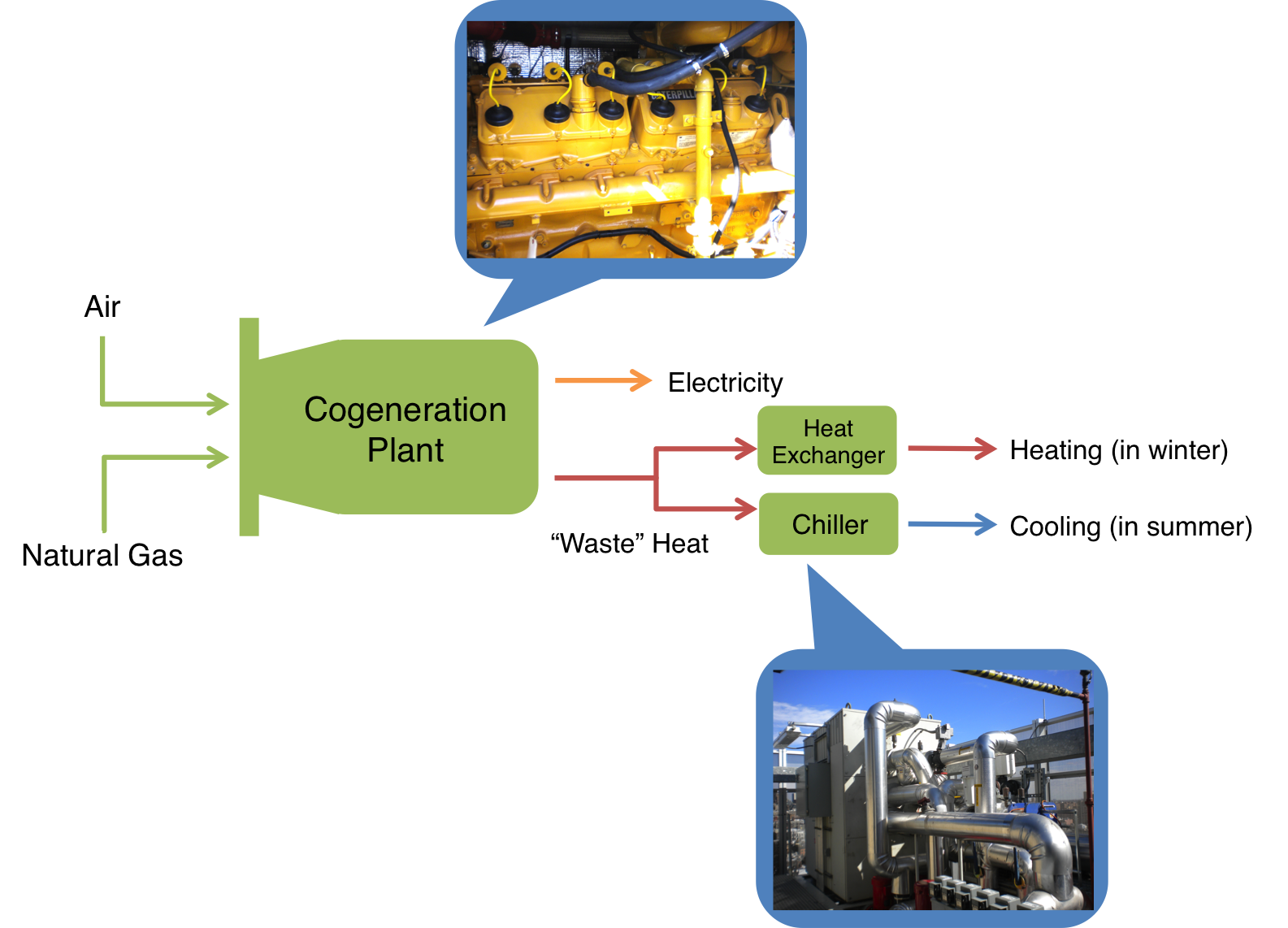What is cogeneration?
Cogeneration or combined heat and power (CHP) is the use of a heat engine to simultaneously generate electricity and useful heat. This energy and cost saving technology uses natural gas in an internal combustion engine to drive a generator and makes use of "waste" heat to heat or cool the building.
How does cogeneration compare to typical heat engines?
Typical heat engines can produce electricity but simply reject waste heat to the atmosphere. By using cogeneration as opposed to typical heat engines, efficiency is increased from about 40% to 80%.
How does cogeneration work?The cogeneration plant runs on air and natural gas to produce electricity as well as "waste" heat. In winter, this waste heat from the cogeneration plant is passed through a heat exchanger for heating. During the summer, this heat is used to drive an absorption chiller. The heat exchanger and chiller then help to regulate the temperature of the building through the radiant panels. |

|